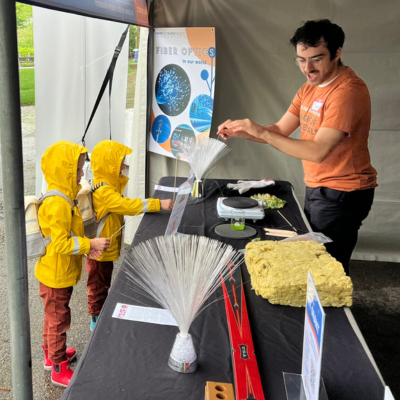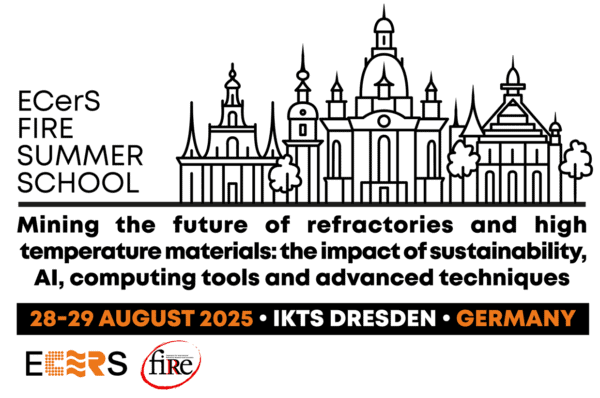At first glance, one may not realize what a cow heart and materials science have in common. Students watch as a cardiologist inserts a stent into a cow heart, mimicking a real-life procedure that opens a clogged artery and echoing the Ceramic and Glass Industry Foundation’s (CGIF) shape memory alloy lesson.

The lesson demonstrates how temperature changes, like insertion into the body, can allow materials like nitinol to expand into its original shape and hold up the walls of a collapsed or clogged artery.
The Young Surgeons Club is an after-school organization where seventh and eighth grade students at University School in Shaker Heights, Ohio, learn about medical professions through a series of discussions and demonstrations led by medical professionals from various fields.
Young Surgeons Club advisor and sixth grade science teacher Chris Ann Slye first made the connection between materials science and the medical field after attending the CGIF’s Teacher Training Workshop over the summer.
Since then, Slye has received a kit grant from the CGIF so she can incorporate Mini Kit lessons such as “What is a Shape Memory Alloy?” into the Young Surgeons Club, as well as the sixth grade Blood and Guts Club she also sponsors.
“It was really nice to not have to spend the school money and instead have that support, which then motivated me even more to just keep finding connections between what was in the kit and how I can apply that to my curriculum,” Slye says about receiving a CGIF kit grant.
In the spring, Chris Ann Slye invited her husband and GrafTech materials scientist Bill Slye to speak at a Young Surgeons Club meeting. Bill Slye focused his talk on different materials, with an emphasis on the metal alloy nitinol, and then Chris Ann Slye taught the shape memory alloy lesson to her students.

During an application of this lesson, Dr. Samir Kapadia, Chairman of the Department of Cardiovascular Medicine at the Cleveland Clinic, demonstrated an angioplasty for the Young Surgeons. An angioplasty is a procedure that opens a clogged or blocked artery.
Kapadia inserted a stent to support the artery, which connects to the shape memory alloy lesson by showing how materials such as nitinol can be manipulated for use in medical applications. Stents can be made out of metal mesh, silicon, or combinations of other materials, depending on where they are inserted in the body. Dr. Kapadia used a cow heart to conduct the stent insertion so students could see and assist in a hands-on demonstration.
“They love the hands-on component. And when you do it, you learn it,” Slye says. “So even though it might be an abstract, maybe higher-level concepts that you’re trying to teach them, they get it if they do it.”
In addition to the shape memory alloy lesson, Slye has also utilized the CGIF Glass Kit lesson “Water Pods: Bioactive Glass Microbead Encapsulation” to teach the Young Surgeons Club about drug delivery in medicine and pharmaceuticals. The glass microbead lesson teaches students about the concept of liquid encapsulation within spheres and how they can break down in the body through the safety of water pods instead of medicine.
Slye invited Dr. Cameron Stuart, an anesthesiologist from Cleveland Clinic, who gave a presentation about medical school and anesthesiology at another Young Surgeons Club meeting. Slye then taught a lesson inspired by the CGIF’s bioactive glass microbead lesson to connect Stuart’s talk about anesthesiology with drug delivery and bioactive glasses.

“I just thought this would be the perfect tie-in to merge my love of engineering—because my background is chemistry—with the Young Surgeons medical concepts,” Slye says. “So the two lessons just really tied in very well.”
Slye’s main goal for the Young Surgeons Club is to plant “science seeds” in the minds of students so that they may be inspired to pursue fields in materials science or explore careers in engineering disciplines such as biomedical engineering.
“Not everybody’s going to go on and be a medical doctor or follow a medical profession, but a lot of people end up going off to different disciplines of engineering,” she says. “I think students don’t quite understand all of their engineering options… Usually material science is not even remotely in their brain. I feel that material science is that perfect crossover between medicine, between chemistry, between everything.”

You can help to bring these unique material science learning experiences to more students by supporting the CGIF at ceramics.org/donate.
Categories
- Feature Stories
- Kit Grants
- Materials Science Kits


